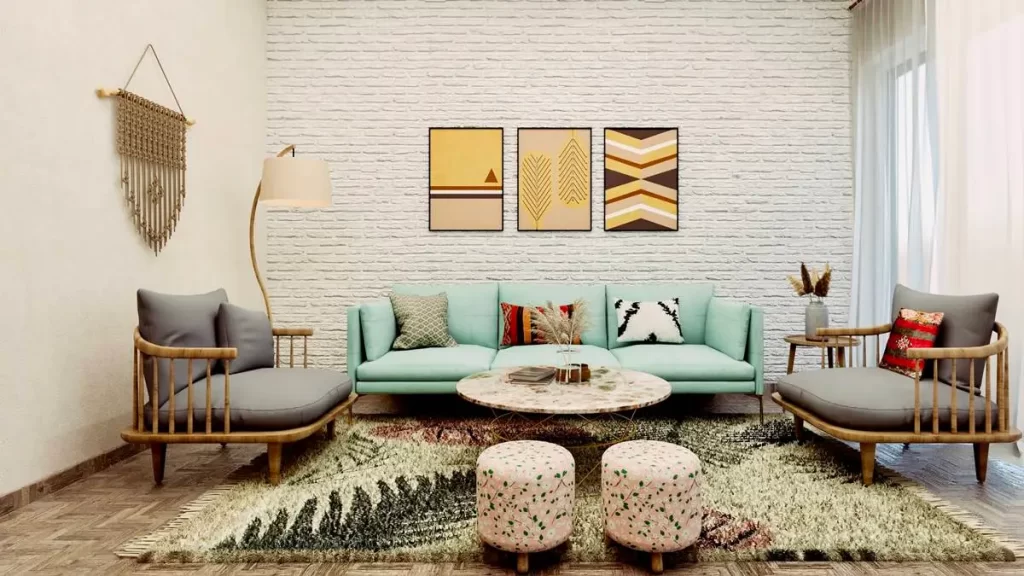
Over the last ten years, there has been a notable expansion and change in the Indian interior design sector. The demand for professional interior design services has increased across the residential, commercial, and hospitality sectors due to the booming real estate sector, rising disposable incomes, and changing consumer preferences. But as the sector expands, it also faces a number of difficulties that could affect its future and open doors.
Market Synopsis
India’s interior design market is estimated to be worth billions of dollars, and its players range widely, from large corporate entities to independent designers and boutique firms. Major centers for interior design activity include Bangalore, Chennai, Mumbai, Delhi, and other major cities. Urbanization, the growth of infrastructure, and a growing emphasis on both practicality and beauty are the main drivers of these centers.
Growth Pioneers
The rapid expansion of metropolitan areas and the development of new residential and commercial projects have led to a rise in the demand for interior design services. Both developers and homeowners are realizing the increasing value of professional interior design in enhancing the appeal and value of properties.
Shifting inclinations of customers:
Indian consumers today are more interested in design and prepared to spend money customizing their homes and workplaces. The need for custom interior design solutions that represent unique lifestyles and cultural sensibilities has increased as a result of this trend.
The Ascent of Digital Media Platforms
Digital tools and online platforms have made interior design ideas and services more accessible to a wider audience. With the use of augmented reality (AR) and virtual reality (VR) technologies, immersive design experiences are being provided, allowing clients to virtually visualize and personalize their spaces.
Governmental Programs:
Laws promoting affordable housing and initiatives like the “Smart Cities Mission” have further accelerated the growth of the construction and interior design sectors. Government incentives for sustainable building practices also impact market dynamics and design choices.
Challenges the Sector Faces
Deficits in Skill:
There is a severe shortage of skilled labor in India’s interior design industry, particularly in specialized fields like ergonomics, sustainable design, and smart home technologies. To close this gap, funding for education and training programs tailored to the needs of the business is required.
Regulatory Compliance:
Complying with state-specific building codes and intricate regulatory frameworks presents difficulties for designers and businesses that work in several locations. Timelines for projects are extended, and expenses rise when adhering to these regulations.
Cost management:
Increasing labor and material costs, coupled with client demands for competitive pricing, present constant challenges for interior design firms. It takes clever pricing and procurement strategies to strike a balance between affordability, creativity, and quality without sacrificing margins.
Competition and differentiation:
There are many players in the market providing comparable services, making it a very competitive environment. Standing out in a crowded market requires developing a distinctive value proposition, creating a strong brand identity, and reliably providing creative design solutions.
Opportunities on the Horizon
Rise of Sustainability:
Growing awareness of environmental issues is driving demand for sustainable design practices and eco-friendly materials. Interior designers who integrate sustainability into their projects can capitalize on this trend and appeal to environmentally conscious clients.
Technology Integration:
Continued advancements in digital tools, artificial intelligence (AI), and IoT (Internet of Things) present opportunities to revolutionize the design process. From automated design simulations to smart home solutions, embracing technology can enhance efficiency and client satisfaction.
Expansion into Niche Markets:
Beyond traditional residential and commercial sectors, niche markets such as healthcare, education, and retail are emerging as lucrative avenues for interior design services. Tailoring solutions to meet the unique requirements of these sectors can unlock new growth opportunities.
Collaboration and networking:
Strategic partnerships with architects, developers, and industry stakeholders can expand market reach and facilitate access to larger projects. Networking platforms and industry events provide avenues for collaboration and knowledge exchange, fostering innovation and business growth.
Conclusion
The interior design market in India presents a dynamic landscape characterized by growth opportunities and inherent challenges. By navigating regulatory complexities, embracing technological advancements, and investing in talent development, stakeholders can position themselves to capitalize on evolving consumer preferences and market trends. With a proactive approach to innovation and sustainability, the industry is poised for continued expansion and transformation in the years ahead.